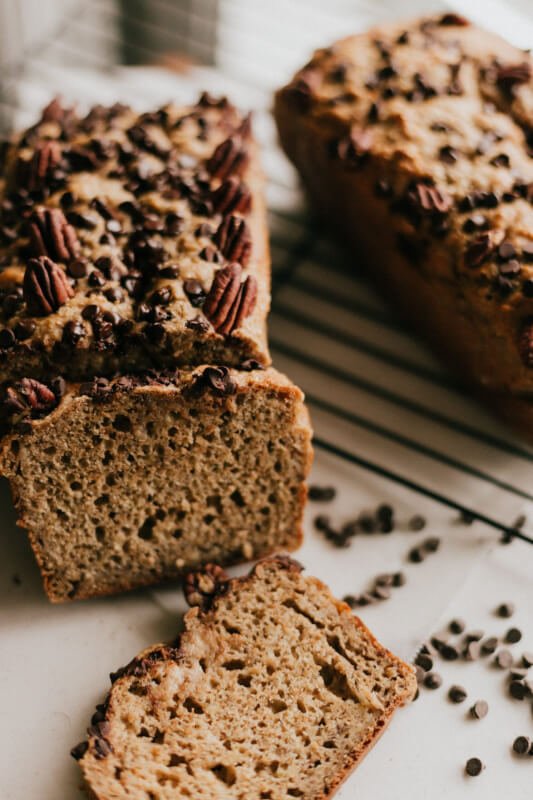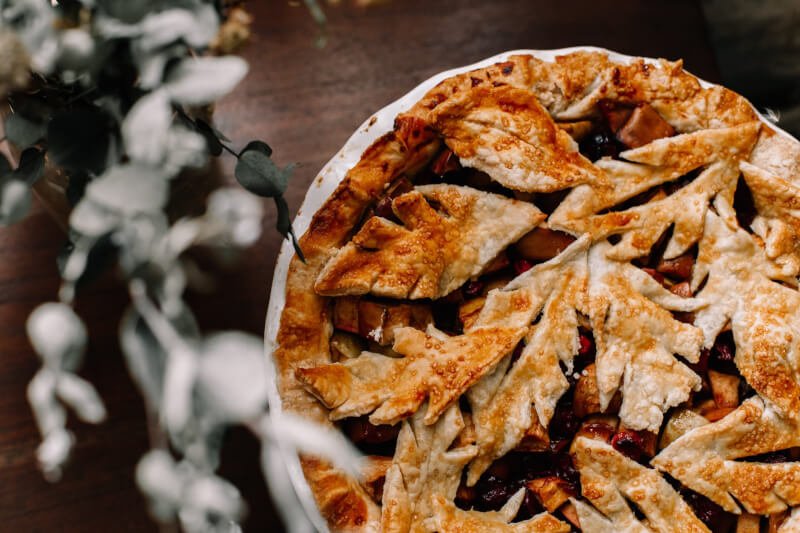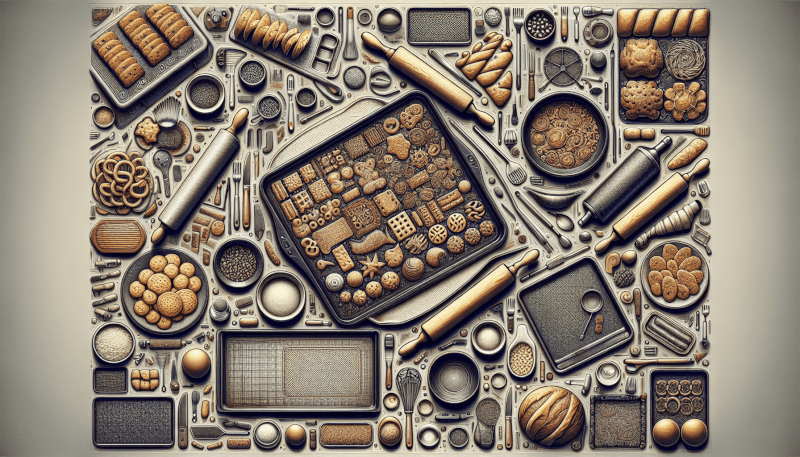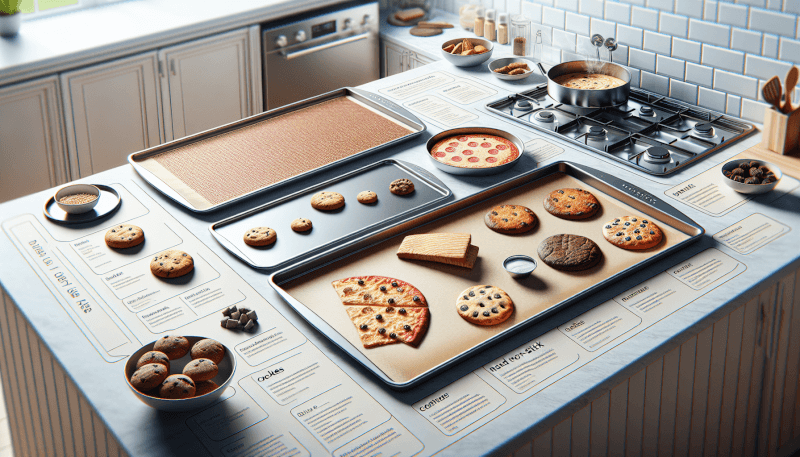In this comprehensive guide, you will discover everything you need to know about baking sheets and how to make the most out of them. From understanding the different types of baking sheets to learning the best uses for each, this article will equip you with the knowledge to become a baking sheet expert. Whether you are a seasoned baker or just starting out, this guide will ensure that you have the right tools for the job and achieve delicious results every time. Get ready to elevate your baking game with the complete guide to baking sheets and their uses.

Choosing the Right Material for Baking Sheets
Aluminum Baking Sheets
Aluminum baking sheets are a popular choice among bakers due to their excellent heat conductivity and durability. They heat up quickly and distribute heat evenly, resulting in consistent baking results. Aluminum baking sheets are also lightweight and easy to handle, making them a convenient option for everyday baking. However, they can react with acidic ingredients and cause a metallic taste, so it’s best to use parchment paper or a silicone baking mat to prevent this.
Steel Baking Sheets
Steel baking sheets are known for their durability and ability to withstand high temperatures. They are often made from heavy-gauge steel, which prevents warping and ensures even heat distribution. Steel baking sheets are ideal for tasks that require intense heat, such as roasting and broiling. However, they may require seasoning to prevent rusting and sticking. With proper care, steel baking sheets can last a lifetime and are a great investment for avid bakers.
Non-Stick Baking Sheets
Non-stick baking sheets are coated with a layer of Teflon or other non-stick materials, which makes them perfect for baking delicate items like cookies and pastries. The non-stick surface allows for easy food release, reducing the need for excessive amounts of oil or butter. Non-stick baking sheets are also a breeze to clean since food particles are less likely to stick to the surface. However, they are not suitable for high-heat applications or using metal utensils, as it can damage the non-stick coating.
Silicone Baking Sheets
Silicone baking sheets have gained popularity in recent years due to their versatility and non-stick properties. They are made from food-grade silicone, which is heat resistant and flexible. Silicone baking sheets can be used in a wide range of temperatures, from freezing to baking at high temperatures. They are also non-stick, eliminating the need for greasing or parchment paper. Silicone baking sheets are easy to clean and can be rolled up for compact storage. However, they may not provide the same level of browning as other materials, so for recipes that require browning, it’s best to use other types of baking sheets.
Understanding Baking Sheet Sizes
Standard Baking Sheet Size
The standard baking sheet size, also known as a full sheet, typically measures 18×26 inches. These larger-sized baking sheets are commonly used in commercial kitchens or when baking large quantities of food. They are perfect for sheet cakes, batch baking, or preparing multiple dishes simultaneously. However, they may be too large for home ovens, so it’s essential to check the dimensions of your oven before purchasing.
Half Sheet Baking Sheet Size
A half sheet baking sheet measures 13×18 inches, making it a more practical option for home bakers. They fit well in most home ovens while still providing ample space for baking cookies, roasting vegetables, or making smaller batch recipes. Half sheet baking sheets are versatile and can be used for a wide range of cooking and baking tasks.
Quarter Sheet Baking Sheet Size
Quarter sheet baking sheets measure 9×13 inches and are perfect for smaller baking and roasting tasks. These compact-sized sheets are ideal for single-serving dishes, toasting nuts, or reheating leftovers. They are also great for apartment or dorm living, where space may be limited.
Jelly Roll Baking Sheet Size
Jelly roll baking sheets, also known as rimmed baking sheets, are similar in size to a half sheet but feature higher sides. The raised edges prevent liquids or juices from spilling over, making them suitable for baking items like jelly rolls, bar cookies, or sheet pan dinners. Jelly roll baking sheets typically measure 10×15 inches and can be used for a variety of sweet and savory recipes.

Different Types of Baking Sheets and Their Uses
Cookie Sheets
Cookie sheets are flat baking sheets with no raised edges, allowing hot air to circulate evenly around the cookies. They are designed specifically for baking cookies and creating a crisp texture. Cookie sheets are usually made of aluminum or steel and come in various sizes. Ensure that the size of your cookie sheet matches the size of your oven for optimal baking results.
Sheet Pans
Sheet pans, also known as sheet trays or baking trays, are versatile baking sheets that can be used for a variety of tasks. They have raised edges, making them perfect for baking sheet cakes, roasting vegetables, or preparing one-pan meals. Sheet pans are available in different materials and sizes, allowing you to choose the one that best suits your baking needs.
Pizza Stones
Pizza stones are baking surfaces made from natural stone or ceramic material. They are designed to replicate the intense heat of a brick oven, resulting in crispy and evenly cooked pizza crusts. Pizza stones absorb and distribute heat evenly, ensuring a well-baked pizza with a crispy bottom. They can also be used for baking bread and other dough-based recipes.
Perforated Baking Sheets
Perforated baking sheets are constructed with small holes or perforations throughout the surface. These holes allow for better air circulation, resulting in evenly baked goods with golden-brown crusts. Perforated baking sheets are ideal for baking items like French bread, baguettes, or any recipe that requires a crisp exterior.
Best Practices for Using Baking Sheets
Preheating the Baking Sheet
Preheating your baking sheet before placing the food on it is essential for achieving optimal baking results. Preheating helps to ensure even heat distribution and can prevent the food from sticking to the sheet. It is especially crucial when baking items that require a crisp texture or a golden-brown crust, such as cookies or bread.
Greasing vs. Using Parchment Paper
When using baking sheets, you have the option to either grease the surface or use parchment paper. Greasing the sheet with butter, oil, or cooking spray prevents the food from sticking and can enhance the browning process. Alternatively, using parchment paper provides a non-stick surface and makes clean-up a breeze. It also helps to keep the baking sheet in good condition by preventing burnt-on residue.
Properly Placing Baked Goods on the Sheet
Properly placing your baked goods on the sheet can greatly affect their outcome. Ensure that there is enough space between each item, allowing for even heat circulation. Overcrowding the sheet can result in uneven baking and prevent the food from browning properly. If necessary, bake in batches or use multiple baking sheets to avoid overcrowding.
Rotating Baking Sheets During Baking
Rotating your baking sheets during the baking process can help ensure even browning and prevent any hot spots in your oven. Always rotate the sheets halfway through the baking time to promote uniform cooking. This is particularly important when baking multiple sheets at once or when using an oven with uneven heat distribution.

Tips for Proper Care and Maintenance of Baking Sheets
Cleaning Baking Sheets
Proper cleaning is crucial for maintaining the longevity and performance of your baking sheets. Allow the sheets to cool completely before cleaning them. For non-stick baking sheets, use a mild dish soap and a non-abrasive sponge or cloth to remove any food residue. For other types of baking sheets, you can use a mixture of water and baking soda to create a paste for scrubbing away stains. Rinse the sheets thoroughly and dry them completely before storing.
Removing Stubborn Stains
Over time, baking sheets may develop stubborn stains or burnt-on residue. For non-stick baking sheets, avoid using harsh scrub brushes or abrasive cleaners that can damage the coating. Instead, create a paste using baking soda and water and apply it to the stained areas. Let it sit for a few minutes before scrubbing gently with a non-abrasive sponge or cloth. Rinse thoroughly and dry completely.
Seasoning Baking Sheets
Some baking sheets, particularly those made of steel or cast iron, require seasoning to prevent rusting and sticking. To season a baking sheet, apply a thin layer of oil or shortening to the entire surface, including the edges. Place the sheet in a preheated oven and bake for about an hour. Allow it to cool completely before wiping off any excess oil. Seasoning your baking sheet periodically will help maintain its non-stick properties and prevent rust.
Storing Baking Sheets
Proper storage of baking sheets is essential to prevent damage and maintain their shape. Stackable racks or dividers can be used to separate the sheets and prevent them from scratching or bending. If space is limited, consider investing in a sheet pan rack or hanging storage to keep the sheets organized and easily accessible. Avoid stacking heavy items on top of the sheets to prevent warping.
Common Mistakes to Avoid with Baking Sheets
Using the Wrong Baking Sheet for the Task
Using the wrong type of baking sheet for a specific recipe can lead to unsatisfactory results. It’s essential to consider the material, size, and features of the baking sheet when choosing the right one for the task. For example, using a non-stick baking sheet for broiling at high temperatures can damage the coating. Similarly, using a small baking sheet for a large batch of cookies can result in overcrowding and uneven baking.
Overcrowding the Baking Sheet
One common mistake when using baking sheets is overcrowding them with too many items. Overcrowding prevents proper air circulation, resulting in uneven baking and potentially undercooked or burnt food. It’s best to leave enough space between each item to allow for even heat distribution and ensure that the food cooks properly.
Neglecting to Rotate the Sheet
Rotating the baking sheets during the cooking process is an essential step that is often overlooked. It helps to promote even browning and prevent any hot spots in the oven. Failing to rotate the sheets can lead to unevenly cooked food and may also result in burnt or undercooked spots. Remember to set a timer and rotate the sheets halfway through the baking time for optimal results.
Using Damaged Baking Sheets
Using damaged baking sheets can affect the quality and consistency of your baked goods. Warped or bent sheets may not allow for even heat distribution, resulting in uneven baking. Scratched or damaged non-stick coating can interfere with the food release process. It’s important to regularly inspect your baking sheets and replace any that are damaged or no longer suitable for use.

Alternative Uses for Baking Sheets
Roasting Vegetables
Baking sheets are not just for baking sweets; they are also great for roasting vegetables. The large surface area allows for even roasting and the caramelization of the vegetables’ natural sugars. Toss your favorite vegetables in oil, season with herbs and spices, spread them out on a baking sheet, and roast in the oven for a delicious and healthy side dish.
Toasting Nuts
Toasting nuts brings out their natural flavors and adds a delightful crunch to various dishes. Spread your nuts in a single layer on a baking sheet and toast them in the oven at a low temperature. Keep a close eye on them, as they can quickly go from perfectly toasted to burnt. Let them cool completely before using them in salads, desserts, or as a snack.
As a Cooling Rack
If you don’t have a wire cooling rack, you can use a baking sheet as an alternative. Once your baked goods are out of the oven, place them on a baking sheet to cool. The raised edges of the sheet allow air to circulate around the food, preventing condensation and ensuring that it cools evenly. This method is particularly useful when cooling larger items such as cakes or bread.
Crafting or DIY Projects
Baking sheets can be repurposed for various crafting or DIY projects. They can be used as magnet boards, memo boards, or decorative wall hangings. Covering a baking sheet with fabric or decorative paper can transform it into a stylish serving tray or a unique wall art piece. The options are endless, and baking sheets can provide a versatile and affordable base for your creative endeavors.
Recipes to Try with Different Types of Baking Sheets
Classic Chocolate Chip Cookies on a Cookie Sheet
Nothing beats a classic chocolate chip cookie baked on a trusty cookie sheet. The flat surface and even heat distribution of a cookie sheet ensure perfectly browned cookies with a soft and chewy interior. Follow your favorite chocolate chip cookie recipe, preheat your oven, and prepare your cookie sheet with either greasing or parchment paper. Drop spoonfuls of cookie dough onto the sheet, leaving enough space in between each one. Bake until golden brown and enjoy a timeless treat.
Sheet Pan Dinner Ideas
Sheet pan dinners are a convenient and flavorful way to prepare a complete meal with minimal effort. Start by choosing your protein, such as chicken, fish, or tofu, and arrange it on a sheet pan. Add a variety of vegetables and season with your favorite herbs and spices. Drizzle with olive oil, toss to coat, and spread everything out in an even layer on the sheet pan. Bake until the protein is cooked through and the vegetables are tender and lightly caramelized. Sheet pan dinners are versatile and can be customized to suit your taste preferences.
Crusty Pizza Using a Pizza Stone
Investing in a pizza stone can take your homemade pizza to the next level. Preheat your pizza stone in the oven for at least 30 minutes to ensure it reaches the desired temperature. While the stone is heating, prepare your pizza dough and toppings. Once the stone is hot, carefully transfer the pizza onto it using a peel or a flat surface. The pizza stone absorbs and distributes heat evenly, resulting in a perfectly crisp and evenly cooked crust. Slide the pizza back into the oven and bake until the crust is golden brown and the cheese is bubbly and melted. Serve and enjoy a professional-quality pizza from the comfort of your home.
Perfectly Browned Baguettes on a Perforated Baking Sheet
A perforated baking sheet is an excellent choice for baking crusty and airy baguettes. Mix your baguette dough according to your preferred recipe and let it rise. Preheat your oven with the perforated baking sheet in it to ensure even heat distribution. Shape the risen dough into baguettes and place them on the preheated baking sheet. The perforations allow for better air circulation, resulting in a crisp and golden crust. Bake until the baguettes are well-browned and make your kitchen smell like a French bakery.

Conclusion
Choosing the right baking sheet may seem like a small detail, but it greatly impacts your baking results. Understanding the different materials, sizes, and uses of baking sheets allows you to make informed choices and enhance your baking skills. Remember to consider factors such as heat conductivity, durability, and specific recipe requirements when selecting your baking sheets. Additionally, proper care and maintenance, including preheating, greasing, and rotating during baking, ensure optimal performance and longevity. With the right baking sheets and techniques, you can create delicious baked goods and explore new recipe possibilities. Happy baking!


